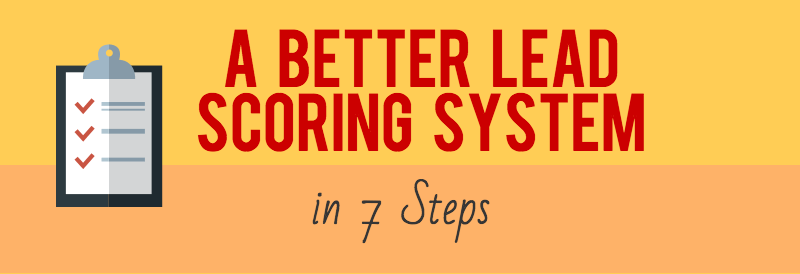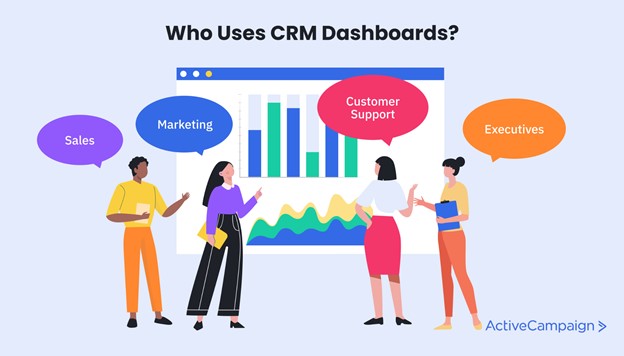Having lots of leads is obviously better than having none, but it comes with a different set of challenges. With so many prospects, how do your salespeople know where to direct their efforts? What’s more, leads vary incredibly in how “ready” they are to buy. If the prospect has just heard of your company, you don’t want to insist on a personalized demo.
Lead scoring uses a logical scoring system to help categorize leads and signal where they are in the buying cycle. This then informs how your team engages and nurtures those prospects. Lead scoring also keeps your sales team focused on your best opportunities, so they aren’t wasting time on dead-end leads.
A good lead scoring model can help you prioritize leads by:
- how likely they are to purchase,
- purchase size, and
- purchase timeframe
By following this model, your sales team is always focused on the hottest, biggest prospects.
In this article, we’ll cover what exactly lead scoring is, why it matters, and how to implement a successful lead scoring program.
Table of contents
- What is lead scoring?
- Why is lead scoring important?
- Common lead scoring mistakes
- 7 steps to better lead scoring
- How to use lead scoring in ActiveCampaign
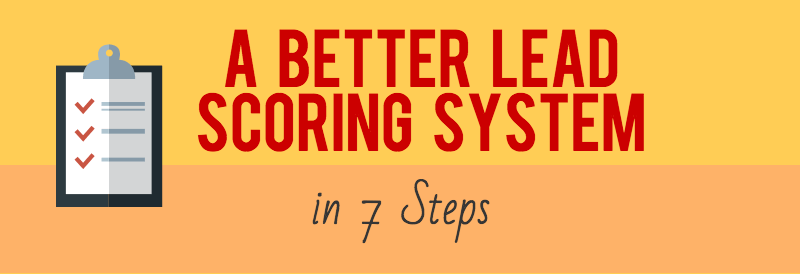
What is lead scoring?
Lead scoring is a system where you assign number values to sales leads to signify how much they have engaged with your brand and, therefore, how your sales team should work with them.
Sometimes called lead grading, most companies create their own unique system. You determine what qualities and behaviors cause a lead to gain points. You might, for example, give points for downloading gated content, forwarding an email, or belonging to a certain target audience.
Along with giving your sales reps a quick way to understand where a lead is in the sales funnel, lead scoring can also be combined with marketing automation to ensure prospects receive the right content at the right time (with less manual typing and button-pushing).
For example, you could create an automation that moves leads from a top-of-funnel drip campaign into a middle-of-funnel campaign after they reach a certain score threshold. Or you can set up an automation to notify your sales team when a lead reaches that threshold.
Why is lead scoring important?
When your sales team wants to engage a lead, the way they proceed depends on what they know about the prospect. Lead scoring gives your sales team valuable information about these potential customers, making the sales process more efficient by telling your team who to focus on and how to engage them.
Here are some of the ways lead scoring helps sales teams.
Identify and target leads that need nurturing
Lower-scoring leads may need additional nurturing to increase their interest and engagement.

With our marketing automation, you can segment your leads with a range of scores and drop them into nurturing campaigns built specifically to develop them into sales-ready leads.
Test assumptions about your target market and sales process
How well do you understand your customers’ characteristics and the behavior pattern that leads to a purchase? You can think of your lead scoring as a predictive model and continue to refine and improve it over time. If it’s accurate, you can use the leads in your pipeline to forecast your revenue.
Identify your “raving fans” and “net promoters”
Lead scoring tools can be used to track your customers’ engagement over time, so you identify extremely satisfied, highly engaged fans of your company. These customers are often ready to recommend you when the opportunity presents itself, and you can encourage that with automated campaigns. These champions of your company deserve a little special treatment.
Standardize how leads are discussed and evaluated
By giving marketing and sales a common language for discussing the quality and quantity of leads, they’ll naturally align themselves. Marketing will have a numerical value of how important each lead factor is, and they can alter their inbound marketing to target specific factors to generate more leads that match specific criteria.
Further refine your marketing messages
You may find that your best leads respond to slightly different marketing campaigns. By segmenting those contacts that are the best match for your business, you can test different approaches that might not work for less interested leads. You may be able to contact these leads more often or be more aggressive with your calls to action.
Common lead-scoring mistakes
Lead scoring is a powerful tool, but it’s only as good as the rules you set in place. Here we cover some of the most common mistakes companies make when defining and implementing their lead-scoring system.
Failing to score on both fit and interest
Lead characteristics (fit) and their behavior (interest) are important.
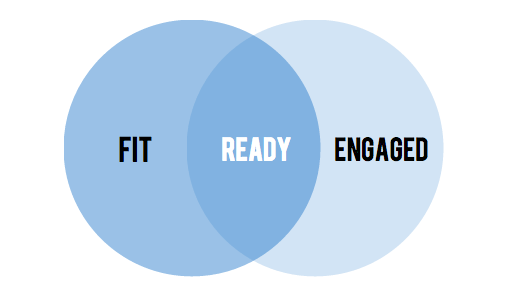
You need multiple rules from both categories and points spread more or less evenly between them, so you are accessing leads along both dimensions.
Scoring on whims
It’s easy to look at a rule and say, “Well, that’s important, so we’ll give it XX points.” But, this guesstimation is unlikely to create a logical distribution of points. You’ll end up with an unbalanced system that allows leads to score highly by triggering a few big rules. The process outlined below will help you avoid this problem by asking you to divide points among categories of rules, so you start with a balanced point distribution before dividing them among rules.
Using a lead scoring system that is too simple
There is indeed power in simplicity, but a lead-scoring system with only a few rules will not be nuanced enough to identify and prioritize your best leads. You’ll be able to divide “okay” leads from “bad” leads, but your “best of the best” leads won’t be at the top of the pile where they belong. You can’t expect 3 or 4 rules to distinguish your ready-to-buy leads from the lukewarm from the bad.
7 steps to better lead scoring
Whether you’re creating a lead scoring system from scratch or want to improve upon an existing one, there is a step-by-step process to better lead scoring. Read on for our 7-step plan and how to apply it to your business.
If you follow these steps, you’ll create a set of lead-scoring rules with enough complexity to prioritize your leads effectively and have a categorically balanced point distribution that considers fit and behavior.
1. What are your minimum customer criteria?
Begin by establishing the minimum criteria a lead must pass to become a customer. These are inflexible qualifications. If it’s not truly essential, don’t list it here.
For instance, your customer may need to be 18 years of age or older. Or, they might have to be within a regional service area.
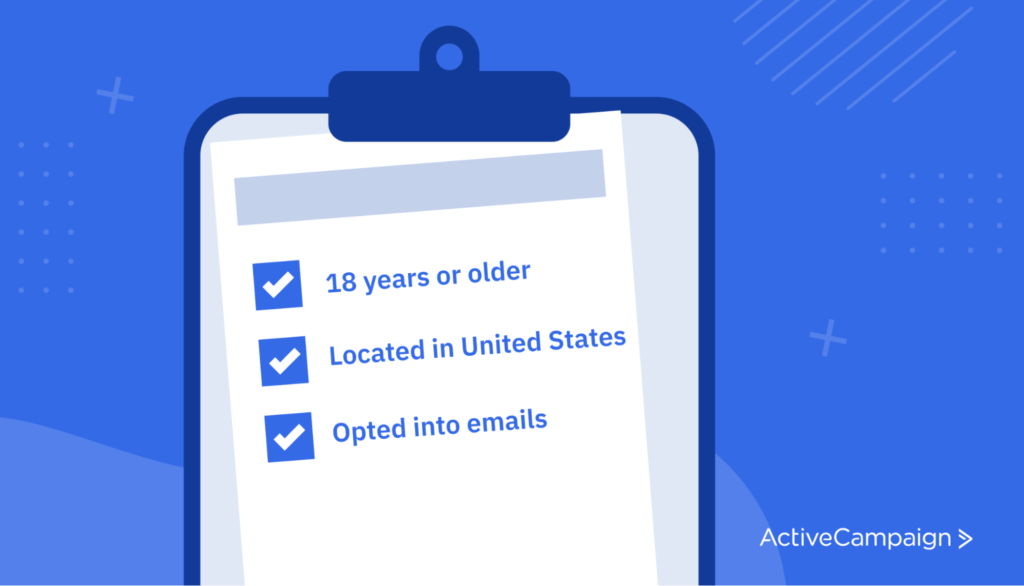
This step will ensure that your sales team doesn’t waste time on anyone who has no chance of becoming a customer. It might seem small or nit-picky, but setting these criteria now will save time forever.
2. Identify characteristics of your target market
Next, identify those qualities that your target market usually possesses.
If you are familiar with your existing customer base, you’ll probably be able to list many of these attributes quickly.
In contrast to the minimum qualifications of Step 1, these are common characteristics of your customers but not necessarily essential. For example, if your target market is within a certain industry or company size, these characteristics will help you identify good leads.
The point is to find those prospects that are most like your typical customer. If they are similar to your existing customer base, they are probably also a fit for your product.
This may be a question your marketing team is better equipped to answer because they’ve probably done extensive research into who your target market is so that they can find and speak to them with tailored messages. In fact, your business may already have a set of customer personas from which you can draw.

Your sales team will also have meaningful input here because they are speaking to the market day in and day out.
3. Who is your ideal lead?
Now you want to identify the characteristics of the “perfect” customer so that these leads earn a higher score.
Consider what makes some leads better than others—what are the qualities and characteristics of your ideal leads? This is a question better posed to your sales team but don’t neglect to get marketing’s input.
Some examples of ideal lead qualities could be:
- Certain size budget
- Having contact with upper management
- Short timeframe to purchase
Like your target market characteristics, these ideal lead qualities will illuminate your best leads and help inform your sales team’s approach.
4. What lead behaviors will you track?
We are now shifting focus from the lead’s characteristics and qualities to the lead’s behavior. These rules will help identify the most highly engaged and interested leads.
Begin by listing all possible behaviors a lead can engage in. While some behaviors are more important than others, it can be helpful to assign a point value to all behavior (even if it is a very small value). So don’t leave anything out just because it seems unimportant.
Consider using:
- Email opens
- Email clicks
- Email replies
- Email forwards
- Social media shares
- Web page visits
- Website sessions
- Requests to contact
- Downloads and form submissions
- Free trial signups
- Product demos
If you have a follow-up campaign, break it down into individual behaviors.
What are the different calls to action it contains?
Some of these behaviors will be “critical conversion behaviors” (behaviors that most of your leads go through before becoming customers).
These might be lead magnets for things like a free trial or requesting a sales demo. A thorough analysis of your Google Analytics data should make these behaviors obvious.
Mark your critical conversion behaviors with a star so you can give them appropriate emphasis when it is time to tie points to rules.
5. Decide on a lead-scoring system
For many companies, a straightforward 1—100 lead scoring scale will be sufficient, but there are additional options opened up by adding digits to your scoring structure.
If your company deals with different types of leads, you could use the thousands digit to classify a lead. For instance, in B2B markets, you might classify leads as “small business,” “medium business,” or “large business” with a 1, 2, or 3. So a lead with a score of 2089 would be a medium-sized business rated with a score of 89.
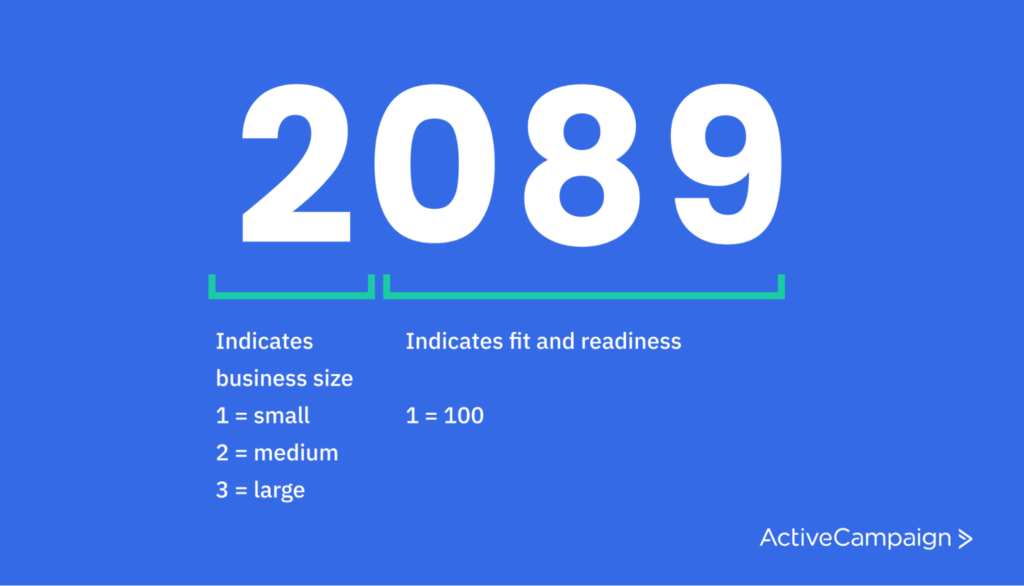
If you identified minimum qualifications in Step 1, you could use a lead’s score to qualify them aside from other factors. This way, a bad lead never makes its way to your sales team (no matter how many behavior-based rules they trigger). To do this, you could give out blocks of 100 points for specific “must have” criteria, so a lead only reaches your threshold for qualification if they match all those necessary criteria.
For instance, you may need leads located in a specific region of the United States, have a contact in a specific department, and are in a certain industry. By giving out 100 points for each of these criteria, a lead only becomes sales-ready when it reaches 300 points. The tens and single digits further refine the score based on more malleable lead characteristics and engagement. So a lead with a score of 389 would be passed to the sales team, but 1 with a score of 289 would not.
| Meets minimum customer criteria? | Target market points (?/200) | Behavior points(?/100) | Pass to a sales team? (275+) | |
| Lead A | Yes | 100 | 88 | 188 |
| Lead B | Yes | 200 | 78 | 278 |
| Lead C | Yes | 200 | 71 | 271 |
6. Distribute points across qualities and behavior
Now that you have a system and a set of rules, it’s a matter of distributing your points.
As I mentioned earlier, it is tempting to look at a rule and give it a point value because it’s pretty easy to judge the importance of each rule based simply on logic, but this can lead to problems, so resist the temptation.
Instead, begin by assigning a maximum value to categories of rules. From there, you can distribute points to individual rules in each category.
This way, you’ll end up with a balanced system that gives proper weight to different factors. This approach will prevent a lead scoring system that scores leads highly simply because they match your target market or display highly engaged behavior—it will take a bit of both to achieve a high score.
You may want to divide your points evenly between characteristic rules (Steps 1-3) and behaviors (Step 4) so that you give appropriate weight to fit and interest-based rules.
If a lead can only earn 50 points (out of 100) from behavior, they’ll probably never make it to the top unless they also match some of your ideal characteristics. But 50 points is enough that engagement is a significant factor in a high score, and there are plenty of opportunities for engaged leads to raise their score.
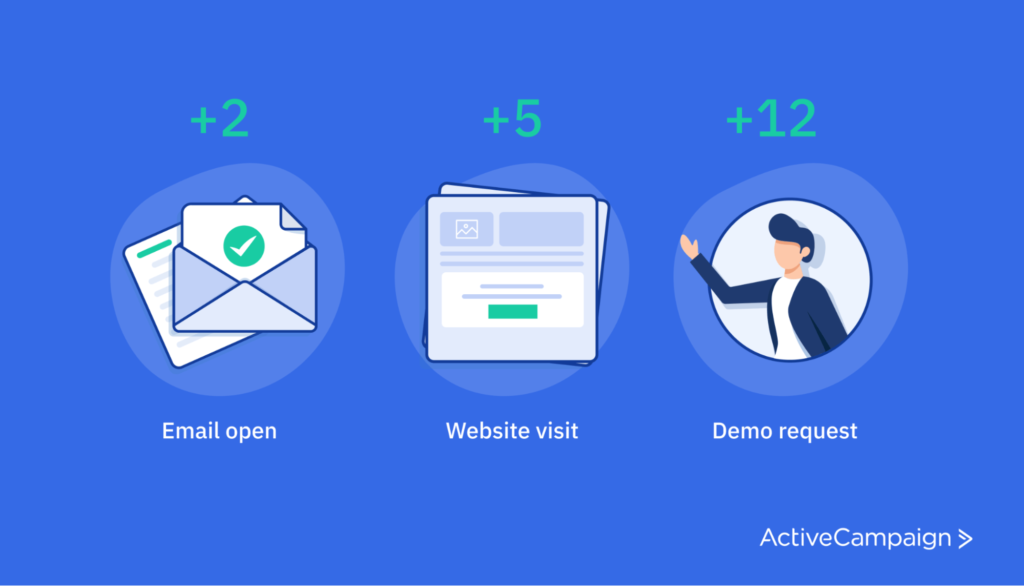
You may want to give equal weight to the “good fit” rules you created in Step 2 and the “ideal prospect” rules you created in Step 3 so that your best leads have the opportunity to distinguish themselves. So you might distribute 25 points (out of 100) toward a “good fit,” and an “ideal” lead can earn an additional 25 points.
You may also want to give equal weight to “critical conversion behaviors” and “interest indicating” behaviors. This way, a lead can receive a high rating for interest, but they won’t rank as high as someone who has also engaged in critical behaviors.
You can vary the specific proportion of points according to your experience with your prospects. The important thing is that you divide up your points along categories in logical ways before assigning those points to individual rules. This way, you can be sure that the distribution of points leads to meaningful, well-balanced scores.
7. Refine and tweak lead scores
As long as you continue to make adjustments, your lead scoring system will continue to improve over time. Create a schedule for reviewing its performance. Every 30 days might be a reasonable time frame in the beginning.
Once you have 30 days or more of data, you can begin to do some analysis:
- Were there low-scoring leads that ended up converting?
- Were there many highly scored leads that didn’t convert?
Try to identify new lead-scoring rules or adjustments in point distribution that could have prevented these scenarios. Focus on the low-scoring leads that ended up converting, especially. You may find that a certain behavior or characteristic is more important than you initially thought.
Some great leads just won’t convert, so you should expect some inconsistencies there, but you want to be sure you are identifying all your best leads. A high number of low-scoring leads that end up converting indicates that your current scoring system might not be identifying all your best leads. If you examine these leads closely, you may find additional rules that would have included them.
It’s unlikely that your lead scoring system will be perfect right off the bat, but as long as your average lead score for “prospects who end up converting” is higher than the average lead score of “those who didn’t convert,” you know you are on the right track.
How to use lead scoring in ActiveCampaign
Our lead scoring tool is highly flexible.
You can score contacts, and you can score deals (or both). You access lead scoring in the upper left-hand corner of the “Contacts” page:
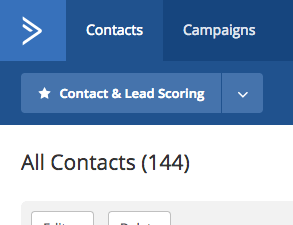
If you have a variety of products or different markets, you can set up as many distinct lead-scoring programs as you want. You can also create distinct lead scores along different dimensions. For instance, you could have separate scores for characteristics and engagement. You could have other scores for email interaction and site tracking.
These lead-scoring programs can house an unlimited number of rules. The rules can be based on any contact field (including custom fields), behavior such as email opens and forwards that are automatically tracked, and website behavior tracked by Site Tracking.
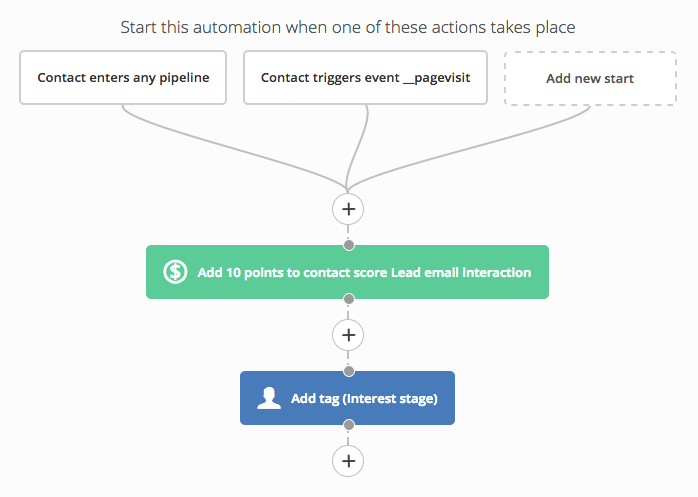
ActiveCampaign’s lead scoring is unique in that you can use lead scores within automations. You could have automations that adjust a lead’s score based on where they fall on the if/then statement or increase their score after they engage with a particular campaign.
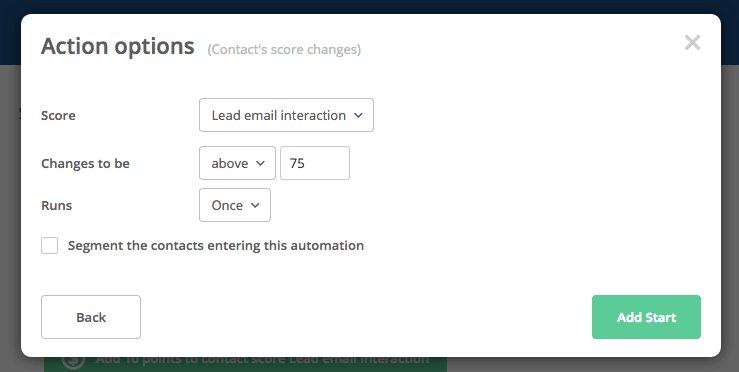
You can also use lead scores to trigger automations. You could have an automation that automatically distributes leads once they cross a threshold score or send an email inviting the lead to participate in a sales consultation or product demo to close the sale.
FAQs
Read on for answers to some of the most common questions about lead scoring.
What is lead scoring and why do I need it?
Lead scoring assigns a numerical score to your sales leads by attaching points to various forms of engagement. You need lead scoring because it helps your sales team prioritize leads and provide the right kind of engagement, ultimately leading to more conversions and sales.
How do I set up lead scoring?
Lead scoring is usually set up in a customer relationship management or marketing automation tool. The exact steps depend on your technology, but ActiveCampaign users can set up as many lead-scoring programs as they want in their contacts section.
What is a good lead score?
Since most companies create their own lead scoring system, there is no 1 “good” lead score. Part of setting up your system is deciding at which score a prospect moves into the next category or segment. Lead scoring helps you meet leads where they are.

The same score on different scales will have different implications.
What are lead scoring best practices?
Your lead scoring system should take into account both fit and interest. While you should beware of unnecessary complexity, you need enough rules to segment leads meaningfully.
Continue to evaluate and optimize your lead system. If you find leads are moving to the next stage when they are not ready, you will need to adjust your scoring thresholds.
Lead scoring leads to increased conversions
Lead scoring is a powerful marketing automation tool. A quality set of lead scoring rules can help your marketing department create better leads and help your sales team convert more leads by focusing their efforts on the highest quality leads.
Any time you invest into creating and perfecting your lead scoring rules will continue to pay off as each new lead is handled according to their exact fit and interest, and you can focus your time exactly where it matters most.
Want to see how easy it is to get started with lead scoring? Begin your free trial with ActiveCampaign today.
